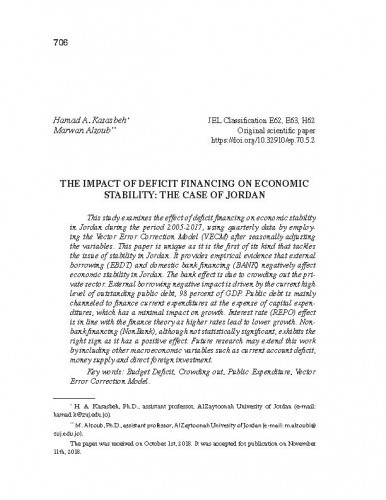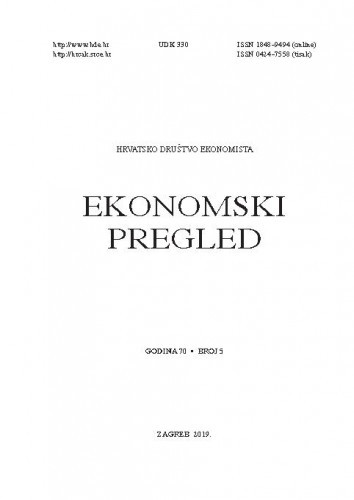This study examines the effect of deficit financing on economic stability in Jordan during the period 2005-2017, using quarterly data by employing the Vector Error Correction Model (VECM) after seasonally adjusting the variables. This paper is unique as it is the first of its kind that tackles the issue of stability in Jordan. It provides empirical evidence that external borrowing (EBDT) and domestic bank financing (BANK) negatively affect economic stability in Jordan. The bank effect is due to crowding out the private sector. External borrowing negative impact is driven by the current high level of outstanding public debt, 98 percent of GDP. Public debt is mainly channeled to finance current expenditures at the expense of capital expenditures, which has a minimal impact on growth. Interest rate (REPO) effect is in line with the finance theory as higher rates lead to lower growth. Non-bank financing (NonBank), although not statistically significant, exhibits the right sign as it has a positive effect. Future research may extend this work by including other macroeconomic variables such as current account deficit, money supply and direct foreign investment.; U ovom se radu ispituje utjecaj financiranja deficita na ekonomsku stabilnost u Jordanu u razdoblju od 2005. do 2017. godine, temeljem tromjesečnih podataka, korištenjem vektorskog modela korekcije pogreške (VECM) nakon sezonskog prilagođavanja varijabli. Ovaj je rad jedinstven jer je prvi takve vrste koji se bavi pitanjem stabilnosti u Jordanu. Rad pruža empirijske dokaze da vanjsko zaduživanje (EBDT) i financiranje domaćih banaka (BANK) negativno utječu na ekonomsku stabilnost u Jordanu. Učinak banke posljedica je istiskivanja privatnog sektora. Negativni utjecaj vanjskog zaduživanja utječe na trenutačno visoku razinu nepodmirenog javnog duga od 98 posto BDP-a. Javni dug uglavnom se usmjerava na financiranje tekućih rashoda na teret kapitalnih rashoda, što ima minimalan utjecaj na rast. Učinak kamatnih stopa (REPO) u skladu je s teorijom financija jer veće stope dovode do nižeg rasta. Nebankarsko financiranje (NonBank), iako nije statistički značajno, pokazuje pravi predznak, jer ima pozitivan učinak. Buduća istraživanja mogu proširiti ovaj rad uključivanjem ostalih makroekonomskih varijabli poput deficita tekućeg računa, novčane mase i izravnih stranih ulaganja.
Sažetak

 Ekonomski pregled : mjesečnik Hrvatskog društva ekonomista : 70,5(2019) / glavni i odgovorni urednik Dragomir Vojnić.
Ekonomski pregled : mjesečnik Hrvatskog društva ekonomista : 70,5(2019) / glavni i odgovorni urednik Dragomir Vojnić.